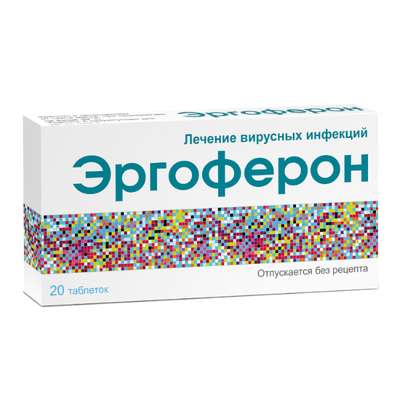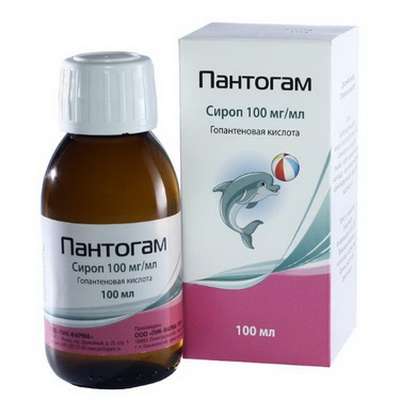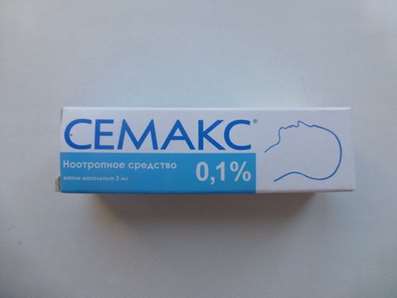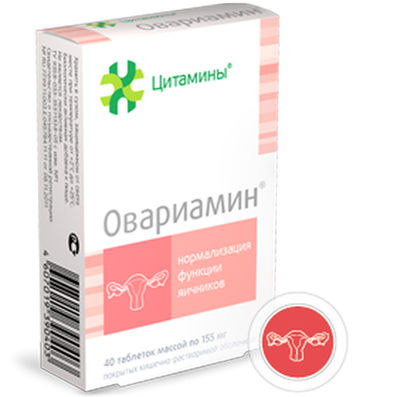Instruction for use: Nurofen
I want this, give me price
Active substance Ibuprofen
ATX code M01AE01 Ibuprofen
Pharmacological group
Non-steroidal anti-inflammatory drug (NSAID) [NSAIDs - Propionic acid derivatives]
Composition
Tablets, coated with a coating.
active substance:
ibuprofen 200 mg
auxiliary substances: croscarmellose sodium - 30 mg; sodium lauryl sulfate - 0.5 mg; sodium citrate dihydrate 43.5 mg; stearic acid - 2 mg; silicon dioxide colloidal - 1 mg
composition of the shell: carmellose sodium - 0.7 mg; talc - 33 mg; acacia gum - 0.6 mg; sucrose 116.1 mg; titanium dioxide - 1.4 mg; macrogol 6000 - 0.2 mg; black ink [Opakod S-1-277001] (shellac - 28.225%, iron dye black oxide (E172) - 24.65%, propylene glycol - 1.3%, isopropanol * - 0.55%, butanol * - 9.75 %, ethanol * - 32.275%, purified water * - 3.25%)
* Solvents evaporated after the printing process
Description of dosage form
The tablets covered with a cover: round, biconcave, covered by a cover of white or almost white color with an overprint of black color "Nurofen" on one side of a tablet.
On a cross-section of a tablet - a kernel of white or almost white color, a cover of white or almost white color.
pharmachologic effect
Pharmacological action - anti-inflammatory, antipyretic, analgesic.
Pharmacodynamics
The mechanism of action of ibuprofen, a derivative of propionic acid from the NSAID group, is due to inhibition of the synthesis of PG mediators of pain, inflammation and hyperthermia. Non-selectively blocks COX-1 and COX-2, which inhibits the synthesis of PG. Has a quick directional action against pain (anesthetic), antipyretic and anti-inflammatory. In addition, ibuprofen reversibly inhibits platelet aggregation. The analgesic effect of the drug lasts up to 8 hours.
Pharmacokinetics
Absorption is high, quickly and almost completely absorbed from the digestive tract. After taking the drug on an empty stomach Cmax ibuprofen in blood plasma is reached after 45 minutes. Taking the drug along with food can increase Tmax up to 1-2 hours.
Connection with blood plasma proteins - 90%. Slowly penetrates into the joint cavity, is retained in the synovial fluid, creating more concentrations in it than in the blood plasma. In the cerebrospinal fluid, lower concentrations of ibuprofen are found in comparison with blood plasma. After absorption, about 60% of the pharmacologically inactive R-form is slowly transformed into an active S-form. It is metabolized in the liver.
T1 / 2 - 2 hours. It is excreted in urine (in unchanged form not more than 1%) and to a lesser extent with bile. In limited studies, ibuprofen was found in breast milk in very low concentrations.
Indications
headache;
migraine;
toothache;
painful menstruation;
neuralgia;
backache;
muscle pain;
rheumatic pain;
pain in the joints;
feverish conditions with influenza and colds.
Contraindications
hypersensitivity to ibuprofen or any of the components included in the formulation;
complete or incomplete combination of bronchial asthma, recurrent nasal polyposis and paranasal sinuses, and intolerance to acetylsalicylic acid or other NSAIDs (including in anamnesis);
erosive and ulcerative diseases of the gastrointestinal tract (including gastric and duodenal ulcer, Crohn's disease, ulcerative colitis) or ulcerative bleeding in the active phase or anamnesis (two or more confirmed episodes of peptic ulcer or ulcer bleeding);
bleeding or perforation of a gastrointestinal ulcer in an anamnesis, provoked by NSAID application;
severe hepatic insufficiency or liver disease in the active phase;
renal failure of severe severity (Cl creatinine <30 ml / min), confirmed hyperkalemia;
Decompensated heart failure;
period after aortocoronary shunting;
cerebrovascular or other bleeding;
intolerance to fructose, glucose-galactose malabsorption, insufficiency of sucrose-isomaltase;
hemophilia and other disorders of blood clotting (including hypocoagulation), hemorrhagic diathesis;
pregnancy (III trimester);
children's age till 6 years.
With caution: simultaneous intake of other NSAIDs, the presence in the history of a single episode of peptic ulcer of the stomach and duodenal ulcer or gastric ulcer bleeding; gastritis, enteritis, colitis, the presence of Helicobacter pylori infection, ulcerative colitis; bronchial asthma or allergic diseases in the stage of exacerbation or anamnesis - it is possible to develop bronchospasm; systemic lupus erythematosus or mixed connective tissue disease (Sharpe's syndrome) - increased risk of aseptic meningitis; renal failure, incl. (Cl creatinine <30-60 ml / min), nephrotic syndrome, hepatic insufficiency, cirrhosis with portal hypertension, hyperbilirubinemia, arterial hypertension and / or heart failure, cerebrovascular diseases, unclear etiology (leukopenia and anemia), severe blood somatic diseases, dyslipidemia / hyperlipidemia, diabetes mellitus, peripheral arterial diseases, smoking, frequent alcohol use, concomitant use of drugs, which may increase the risk of ulcers or bleeding, in particular, oral GCS (including prednisolone), anticoagulants (including warfarin), SSRIs (including citalopram, fluoxetine, paroxetine, sertraline) or antiaggregants (incl. acetylsalicylic acid, clopidogrel), pregnancy I-II trimesters, the period of breastfeeding, the elderly, the age younger than 12 years.
pregnancy and lactation
Contraindicated use of the drug in the III trimester of pregnancy. You should avoid the use of the drug in the I-II trimesters of pregnancy, if necessary, you should consult a doctor.
There is evidence that ibuprofen in small amounts can penetrate into breast milk without any negative consequences for the health of the infant, so it usually does not occur with short-term admission of the need to stop breastfeeding. If it is necessary to take the drug for a long time, you should consult your doctor to resolve the issue of stopping breastfeeding for the period of drug use.
Side effects
The risk of side effects can be minimized if you take the drug with a short course, at the lowest effective dose needed to eliminate the symptoms.
In elderly people, there is an increased incidence of adverse reactions when NSAIDs are used, especially gastrointestinal bleeding and perforations, in some cases fatal. Side effects are predominantly dose-dependent. The following adverse reactions were noted with a short-term intake of ibuprofen in doses not exceeding 1200 mg / day (6 tablets). In the treatment of chronic conditions and prolonged use, other side reactions may occur.
The frequency of adverse reactions was estimated on the basis of the following criteria: very often (≥1 / 10); often (from ≥1 / 100 to <1/10); infrequently (from ≥1 / 1000 to <1/100); rarely (from ≥1 / 10000 to <1/1000); very rarely (<1/10000); frequency is unknown (there is no data on frequency estimation).
On the part of the blood and lymphatic system: very rarely - hemopoiesis disorders (anemia, leukopenia, aplastic anemia, hemolytic anemia, thrombocytopenia, pancytopenia, agranulocytosis). The first symptoms of such disorders are fever, sore throat, superficial ulcers in the mouth, flu-like symptoms, severe weakness, nosebleeds and subcutaneous hemorrhages, bleeding and bruising of unknown etiology.
From the side of the immune system: infrequently - hypersensitivity reactions, nonspecific allergic reactions and anaphylactic reactions, respiratory reactions (bronchial asthma, including its aggravation, bronchospasm, dyspnea, dyspnea), skin reactions (itching, urticaria, purpura, Quincke's edema, exfoliative and bullous dermatoses, including toxic epidermal necrolysis (Lyell's syndrome), Stevens-Johnson syndrome, erythema multiforme), allergic rhinitis, eosinophilia; very rarely - severe hypersensitivity reactions, incl. swelling of the face, tongue and larynx, dyspnea, tachycardia, arterial hypotension (anaphylaxis, Quincke's edema or severe anaphylactic shock).
From the gastrointestinal tract (gastrointestinal tract): infrequently - abdominal pain, nausea, dyspepsia (including heartburn, bloating); rarely - diarrhea, flatulence, constipation, vomiting; very rarely - peptic ulcer, perforation or gastrointestinal bleeding, melena, bloody vomiting, in some cases fatal, especially in elderly patients, ulcerative stomatitis, gastritis; frequency unknown - exacerbation of colitis and Crohn's disease.
From the liver and bile ducts: very rarely - violations of the liver, increased activity of hepatic transaminases, hepatitis and jaundice.
On the part of the kidneys and urinary tracts: very rarely - acute renal failure (compensated and decompensated), especially with prolonged use, in combination with increased urea concentration in the blood plasma and the appearance of edema, hematuria and proteinuria, nephritic syndrome, nephrotic syndrome, papillary necrosis, interstitial nephritis, cystitis.
From the nervous system: infrequently - a headache; very rarely - aseptic meningitis.
On the part of the CCC (cardiovascular system): the frequency is unknown - heart failure, peripheral edema, with prolonged use increased risk of thrombotic complications (eg, myocardial infarction), increased blood pressure (arterial pressure).
On the part of the respiratory system and mediastinal organs: the frequency is unknown - bronchial asthma, bronchospasm, dyspnea.
Laboratory parameters: hematocrit or Hb (may decrease); bleeding time (may increase); the concentration of glucose in the blood plasma (may decrease); clearance of creatinine (may decrease); plasma concentration of creatinine (may increase); activity of hepatic transaminases (may increase).
If side effects occur, stop taking the medication and consult a doctor.
Interaction
The simultaneous use of ibuprofen with the following drugs should be avoided
Acetylsalicylic acid: with the exception of low doses of acetylsalicylic acid (not more than 75 mg / day) prescribed by the doctor, as joint application may increase the risk of side effects. With simultaneous use, ibuprofen reduces the anti-inflammatory and antiplatelet effect of acetylsalicylic acid (possibly an increase in the incidence of acute coronary insufficiency in patients receiving small doses of acetylsalicylic acid as an antiplatelet agent after taking ibuprofen).
Other NSAIDs (non-steroidal anti-inflammatory drugs), in particular selective COX-2 inhibitors: simultaneous use of two or more drugs from the NSAID group should be avoided because of the possible increase in the risk of side effects.
Use with caution at the same time as the following drugs
Anticoagulants and thrombolytic drugs: NSAIDs can enhance the effect of anticoagulants, in particular warfarin and thrombolytic drugs.
Antihypertensives (ACE inhibitors (angiotensin converting enzyme) and ARA II) and diuretics: NSAIDs may reduce the effectiveness of the drugs of these groups. In some patients with impaired renal function (eg, in patients with dehydration or elderly patients with impaired renal function) concomitant administration of ACE inhibitors or ARA II and COX inhibitory agents (cyclooxygenase) can lead to impairment of renal function, including the development of acute renal function insufficiency (usually reversible).
These interactions should be considered in patients taking coxibs concomitantly with ACE inhibitors or ARA II. In this regard, the joint use of the above-mentioned remedies should be administered with caution, especially for the elderly. It is necessary to prevent dehydration in patients, and also to consider the possibility of monitoring renal function after the beginning of such combined treatment and periodically - in the future.
Diuretics and ACE inhibitors can increase the nephrotoxicity of NSAIDs.
SCS: increased risk of gastrointestinal ulcers and gastrointestinal bleeding.
Antiaggregants and SSRIs: an increased risk of gastrointestinal bleeding.
Cardiac glycosides: simultaneous administration of NSAIDs and cardiac glycosides may lead to worsening of heart failure, a decrease in GFR, and an increase in the concentration of cardiac glycosides in blood plasma.
Lithium preparations: there are data on the probability of an increase in the concentration of lithium in blood plasma against the background of NSAIDs.
Methotrexate: There are data on the probability of increasing the concentration of methotrexate in the blood plasma against the background of NSAIDs.
Cyclosporine: increased risk of nephrotoxicity with simultaneous administration of NSAIDs and cyclosporine.
Mifepristone: NSAIDs should be started no earlier than 8-12 days after taking mifepristone, because NSAIDs may reduce the effectiveness of mifepristone.
Tacrolimus: with simultaneous administration of NSAIDs and tacrolimus, an increased risk of nephrotoxicity may occur.
Zidovudine: simultaneous use of NSAIDs and zidovudine may lead to an increase in hematotoxicity. There is evidence of an increased risk of hemarthrosis and hematomas in HIV (human immunodeficiency virus) -positive patients with hemophilia who received co-treatment with zidovudine and ibuprofen.
Antibiotics of the quinolone series: in patients receiving co-treatment with NSAIDs and quinolone antibiotics, an increased risk of seizures is possible.
Myelotoxic drugs: increased hematotoxicity.
Cefamandol, cefoperazone, cefotetan, valproic acid, plikamycin: an increase in the frequency of hypoprothrombinemia.
Drugs (drugs) that block tubular secretion: decreased elimination and increased plasma concentrations of ibuprofen.
Inductors of microsomal oxidation (phenytoin, ethanol, barbiturates, rifampicin, phenylbutazone, tricyclic antidepressants): increase in the production of hydroxylated active metabolites, increased risk of severe intoxication.
Inhibitors of microsomal oxidation: a reduction in the risk of hepatotoxic action.
Oral hypoglycemic drugs and insulin, derivatives of sulfonylureas: enhancing the effect of drugs.
Antacids and colostiramia: decreased absorption.
Urikozuricheskie drugs: a decrease in the effectiveness of drugs.
Caffeine: increased analgesic effect.
Dosing and Administration
Inside, washing down with water. Patients with increased sensitivity of the stomach are advised to take the drug while eating. Only for short-term use. Before taking the drug, you should read the instructions carefully.
Adults and children over 12 years: inside by 1 tab. (200 mg) to 3-4 times a day. To achieve a more rapid therapeutic effect in adults, the dose can be increased to 2 tablets. (400 mg) up to 3 times a day.
Children from 6 to 12 years: 1 table. (200 mg) to 3-4 times a day; the drug can be taken only in the case of a child's body weight of more than 20 kg.
The interval between taking the tablets should be at least 6 hours.
The maximum daily dose for adults is 1200 mg (6 tablets).
The maximum daily dose for children from 6 to 18 years is 800 mg (4 tables).
If the symptoms persist or worsen during 2-3 days, stop treatment and consult a doctor.
Overdose
In children, overdose symptoms may occur after taking a dose exceeding 400 mg / kg. In adults, the dose-dependent effect of an overdose is less pronounced. T1 / 2 of the drug with an overdose is 1.5-3 hours.
Symptoms: nausea, vomiting, pain in the epigastric region or less often - diarrhea, tinnitus, headache and gastrointestinal bleeding. In more severe cases, there are manifestations from the side of the central nervous system: drowsiness, rarely - excitation, convulsions, disorientation, coma. In cases of severe poisoning, metabolic acidosis and increased PV, renal failure, damage to liver tissue, decreased blood pressure, respiratory depression and cyanosis may develop. Patients with bronchial asthma may exacerbate this disease.
Treatment: symptomatic, with mandatory provision of airway patency, monitoring of ECG and basic indicators of vital activity, up to the normalization of the patient's condition. Recommended oral administration of activated charcoal or gastric lavage for 1 hour after taking a potentially toxic dose of ibuprofen. If ibuprofen has already been absorbed, an alkaline drink may be prescribed to excrete the acid derivative ibuprofen by the kidneys, forced diuresis. Frequent or prolonged seizures should be quenched in / in the administration of diazepam or lorazepam. When bronchial asthma worsens, the use of bronchodilators is recommended.
special instructions
It is recommended to take the drug as short a course as possible and at the minimum effective dose necessary to eliminate symptoms. If you need to take the drug for more than 10 days, you should consult your doctor.
In patients with bronchial asthma or allergic disease in the acute stage, as well as in patients with an anamnesis of bronchial asthma / allergic disease, the drug can provoke bronchospasm. The use of the drug in patients with systemic lupus erythematosus or a mixed disease of connective tissue is associated with an increased risk of developing aseptic meningitis.
During long-term treatment, control of the peripheral blood picture and the functional state of the liver and kidneys is necessary. When symptoms of gastropathy appear, careful monitoring including esophagogastroduodenoscopy, a general blood test (Hb determination), and a fecal occult blood test are shown. If it is necessary to determine 17-ketosteroids, the drug should be discontinued 48 hours before the test. During the period of treatment, ethanol is not recommended.
Patients with renal insufficiency should consult with a doctor before using the drug, since there is a risk of impairment of the functional state of the kidneys.
Patients with hypertension, incl. in an anamnesis, and / or CHF, it is necessary to consult a doctor before using the drug, since the drug can cause fluid retention, increased blood pressure and swelling.
Information for women planning pregnancy: the drug suppresses COX and the synthesis of PG, affects ovulation, disrupting female reproductive function (reversible after withdrawal of treatment).
Influence on the ability to drive vehicles, mechanisms. Patients who report dizziness, drowsiness, blockage, or visual impairment when taking ibuprofen should avoid driving motor vehicles or controlling mechanisms.
Form of issue
The tablets covered with a cover, 200 mg. By 6, 8, 10 or 12 of the table. in the blister (PVC / PVDC / aluminum). One blister (6, 8, 10 or 12 tablets) or two blisters (6, 8, 10 or 12 tablets) or three blisters (10 or 12 tablets) or four blisters (12 tablets each) or eight blisters (12 tablets each) are placed in a cardboard box.
Conditions of leave from pharmacies
Without recipe.
storage conditions
At a temperature of no higher than 25 ° C.
Keep out of the reach of children.
Shelf life
3 years.
Do not use after the expiry date printed on the package.

 Cart
Cart





